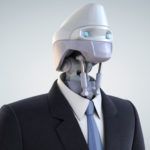Robot fever
Around 320 million workers could be replaced by robots everywhere in the world. There is a proliferation of studies that analyze the economic impact of robots, which could surpass 1.7 trillion dollars by 2025 in the health, manufacturing and services sectors, among others.

July 2015. The Henn Na hotel, or “Weird Hotel”, has opened. The news is in all of around the world. It is the first establishment where robots attend to guests. It costs 66 euros to stay the night surrounded by androids who, although cannot make the bed, do not ask for a wage and can work without a break seven days a week, 24 hours a day.
Henn Na is a good example of robot fever in Japan. The country, one of the leading countries in terms of robots, continues to focus on this technology. A month ahead of the opening of the “Weird Hotel”, the robot called Pepper had sold out just one minute after it went up for sale. Its price, 1,500 euros, did not stop the madness over this small android --120 centimeters tall, weighing 28 kilos and a 14-hour battery-- which can interpret emotions and interact with people.

"Depending on the emotion at the time, Pepper talks more loudly or sighs, relaxes around people it knows, is pleased when it receives a compliment, or is frightened when the lights go out", explain its creators. On top of the initial price, it costs 177 euros a month for three years to connect to the cloud, which allows Pepper to keep up its learning with the rest of the Peppers on the market. This pushes its price up to a grand total of 8,000 euros.
Although it was initially designed with families in mind, Pepper can also attend to clients at Japanese establishments. The country, which has an unemployment rate of 3.3%, is struggling to alleviate the aging of its population. Japan has around 127 million people. Out of them, only 12.8% are less than 14 years old. The Japanese government estimates that by 2060 the population will total 86 million people, 40% over 65 years old. That is why it is looking to robots to make up for the lack of workforce.
The economic impact of robots
The robot industry and production automation technology rose by 14.4% compared to 2014, although not only Japan is experiencing a robot revolution. A study by Boston Consulting Group (BCG) reveals that robots will replace factory workers at a faster rate than expected over the next decade, bringing labor costs down by 16%. Investment in robots will rise by 10% a year in the 25 main exporting countries by 2025.
“Connected and capable of resolving complex problems, the new generation of robots will be able to take on 25% of automated tasks versus the 10% that traditional robots currently perform”, according to the study, which goes on to say that over the next 10 years investment in robots will total 60,000 million euros, compared to 25,000 million this year.
Using robots will bring down labor costs by 33% in South Korea, 25% in Japan, 24% in Canadaand 22% in the United States and Taiwan. Just 10% of jobs that can be automated are currently performed by robots. In 2025, machines will account for more than 23% of these job posts, according to forecasts by Boston Consulting.
Regarding their efficiency, another study, “The robots are coming”, by Deloitte, highlights that robots have an error margin of 0.02% and adds that they can perform any rule-based, repetitive process subject to human error, with peak workloads that require night shifts or overtime and are not essential for the company.
According to Deloitte, “the reality is that automation and robots lower costs and are quick to implement because it only takes two to four weeks to automate any process”. Deloitte explains that in the UK a robot costs a ninth of the total cost of an employee.
McKinsey estimates that the invasion of robots will have an economic impact of 1.7-4.5 trillion dollars by 2025 in sectors such as health, manufacturing and services, and that in the medium-term some 320 million workers could be replaced by robots everywhere in the world. The robot revolution seems to be a serious thing this time.